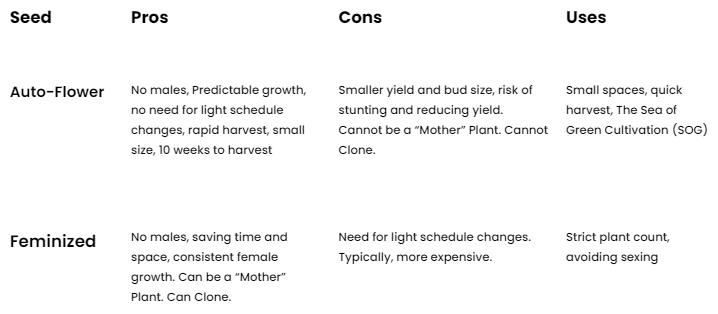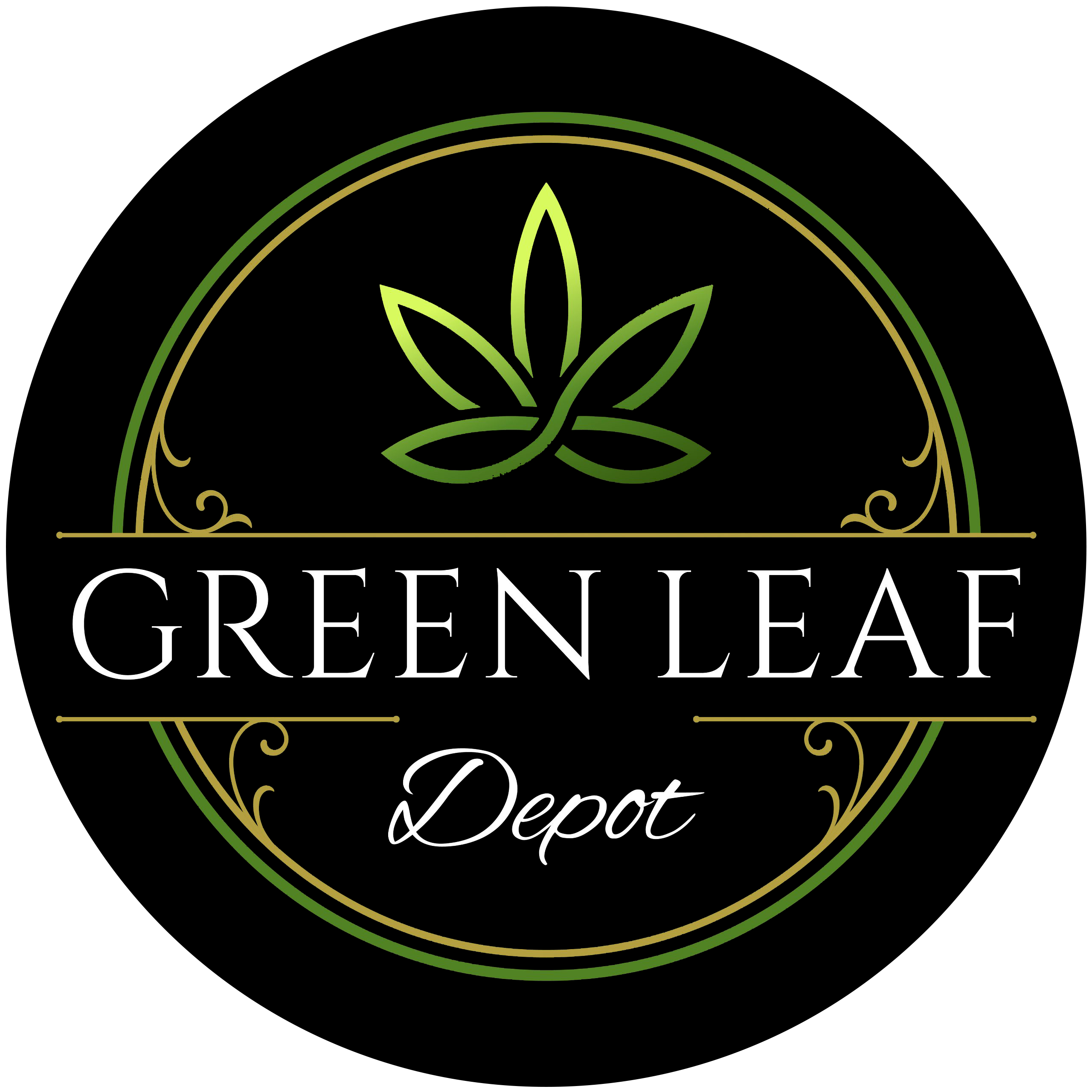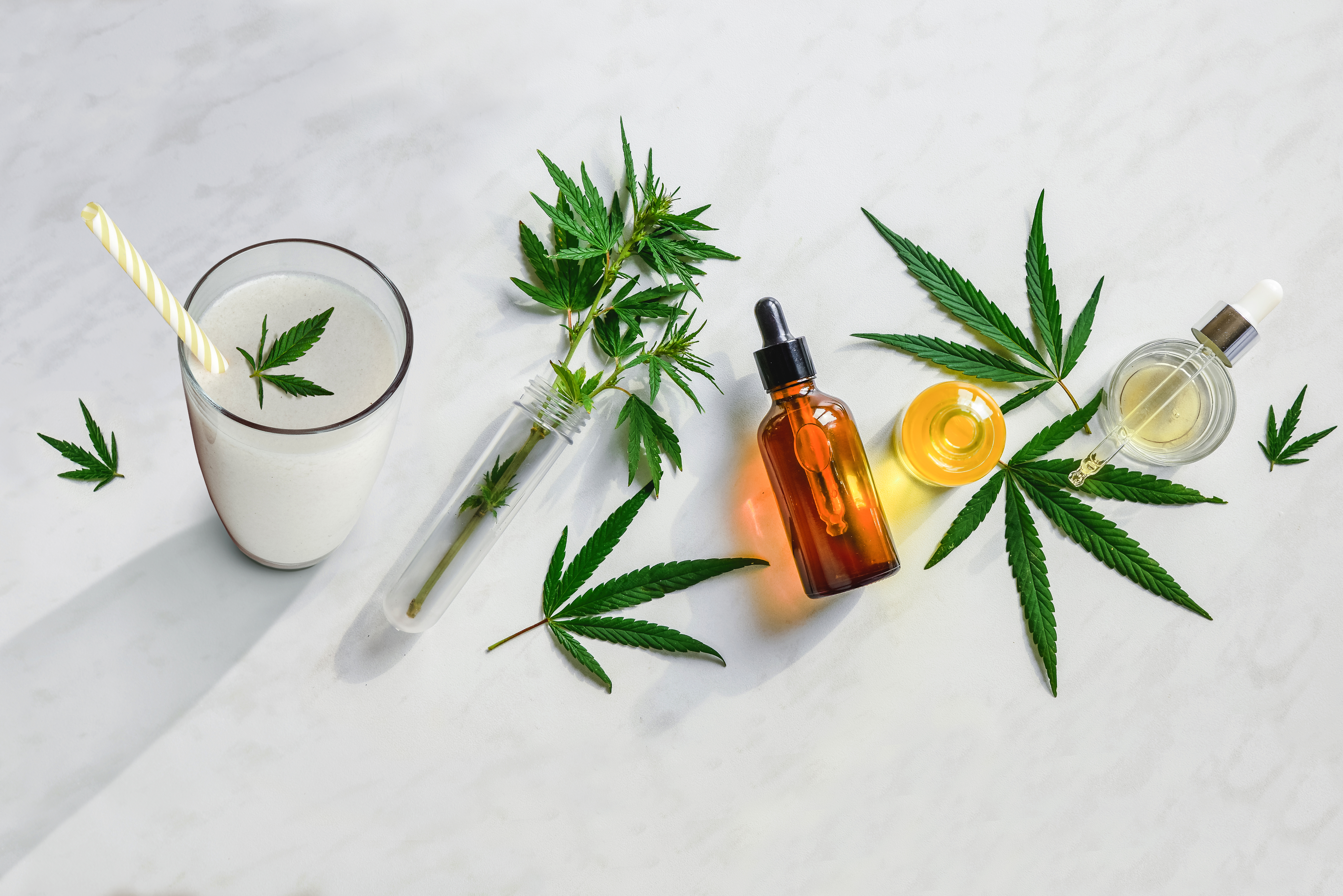FAQs
The Basics
What is Cannabis?
Cannabis is a versatile flowering plant that offers a range of practical and medicinal advantages through its diverse components. Its seeds serve as a nutritious food source, and its stems can be transformed into paper, rope and textiles. Medicinal attributes reside predominantly in the leaves, roots and flowers of the cannabis plant. When it comes to consumption, the coveted buds otherwise known as ‘Flower’, are exclusive to female cannabis plants, with male counterparts fulfilling pollination and seed productions roles. Cannabis plants take about 9-12 weeks to grow from vegetation to the flowering stage, and takes about 2-4 weeks to cure before consumption.
Chemical Compounds of Cannabis
Cannabis Contains over 400 chemical compounds such as Cannabinoids, Terpenoids, Flavonoids & Omega Fatty Acids. Of these, over 100 are Cannabinoids. Cannabidiol (CBD) & Delta9 Tetrahydrocannabinol (THC) are 2 types of cannabinoids derived from cannabis. In recent years, interest has grown in the potential health effects & benefits of cannabis. Much of this interest has centered on these 2 cannabinoids.
What Are Neurotransmitters?
Neurotransmitters are chemical messengers that relay signals between nerve cells in the body. They play an important role in a wide range of functions including sleep, pain, appetite, mood & the immune system.
The Endocannabinoid System
Cannabinoids are natural molecules produced within the human body and act as stimulants for receptors present in teh brain, organs, connective tissues, glands and immune cells. The endocannabinoid system plays a crucial role in regulating various essential aspects of our daily lives, including appetite, neuroplasticity, neuroprotection, pain modulation and immune response.
Found in all mammals, the endocannabinoid system owes its name to the cannabis plant, which led to its discovery in 1992. This system’s function is influenced by two primary receptors: cannabinoid receptor type 1 (CB1) and cannabinoid receptor type 2 (CB2). Interestingly, the cannabinoids present in cannabis mimic those naturally occurring in the endocannabinoid system.
The discovery of CB1 receptors in 1990 revealed their prevalence in nerve cells within the brain and spinal cord, as well as in some peripheral organs and tissues. Their functions are linked to appetite, movement, posture, sensory perception memory, cognition and emotions. CB2 receptors, discovered in 1992, are primarily located on white blood cells and the outer tissue of the immune system. They are prominently associated with inflammation and pain regulation.
Cannabis Chemical Compounds
Terpenes
Terpenes are the aromatic compounds that exist in all plants. They are responsible for giving essential oils their aroma and their effects on your physical and mental health.
There are over 100 terpenes found in cannabis. Although most are found in trace amounts, major and minor terpenes combine to create the distinctive aromas of marijuana strains. Terpenes may interact with a wide range of pathways in your brain, immune system, and other parts of your body.
Caryophyllene
Effects: Relaxation
medicinal Benefits: Stress relief, antioxidant, inflammation, muscle spasms
Flavor Profile: pepper, wood, spice
Limonene
Effects: Elevated mood, stress relief, creativity
Medicinal benefits: anti-anxiety, anti-depression
Flavor profile: Citrus
Myrcene
Effects: Sedating, relaxing
Medicinal benefits: antiseptic, antifungal, antibacterial
Flavor profile: Musk, cloves, herbal
Linalool
Effects: Sedating, calming
Medicinal benefits: relief from insomnia, stress, depression, anxiety, pain
Flavor profile: floral, citrus, spice
Pinene
Effects: alertness, memory retention
Medicinal benefits: inflammation and asthma relief
Flavor profile: sharp, sweet, pine
Terpinolene
Effects: euphoric, creative, relaxed
Medicinal benefits: antifungal, antioxidant, sedative, anti-cancer
Flavor profile: pine, floral, citrus
Ocimene
Effects: energizing, uplifting
Medicinal benefits: antioxidant, antifungal, decongestant
Flavor profile: sweet, tropical, herbaceous
Humulene
Effects: mild sedative
Medicinal benefits: anti-inflammatory, appetite suppressant, antibacterial
Flavor profile: earth, wood, spice
CBD
What is CBD?
CBD, or Cannabidiol, functions as a regulator in the endocannabinoid system, not primarily bonding to CB1 or CB2 receptors and transmitters. Reported benefits of CBD encompass anti-anxiety, anti-inflammatory, antipsychotic, anticonvulsant and antidepressant properties. CBD is non-psychoactive.
What is CBG?
Referred to as “the mother of all cannabinoids”, CBG, or Cannabigerol, is derived from young cannabis plants. It’s more rare than CBD, and the reported benefits include anti-inflammatory, antioxidant, anti-bacterial, antidepressant, and anti-fungal properties. CBG is non-psychoactive.
What is CBN?
CBN, or Cannabinol, is mildly psychoactive. It’s created from decarboxylated THC, as cannabis plants mature. CBN bonds primarily with CB2 receptors, making it ideal for enhancing relaxation and inducing sleep. Other properties include pain relief and reduction of glaucoma.
CBD for Pets
Most commonly used for Mobility & Calming
Calming CBD for pets may help with stress, anxiety, or even specific phobias
Mobility CBD for pets may help with arthritis & sore muscles
CBD for pets also can be used as a regular supplement to promote the overall health & well- being
What is CBDa?
CBDa stands for Cannabidiolic Acid & it’s the precursor molecule to CBD derived from the cannabis plant
CBDa is the most abundant cannabinoid
There is some early evidence to suggest CBDa has it’s unique advantage
CBDa vs CBD
CBDa is the raw form of CBD found abundantly in hemp plants
CBDa transforms into CBD through decarboxylation ( application of heat) which breaks off the Carboxylic Acid chain on the molecule, Leaving CBD & altering its effects on the body
CBDa interacts with endocannabinoids system, just like THC & CBD, but their molecular structure may affect how these compounds exert their effects
CBDa may be more effective than CBD for helping support nausea symptoms, stress, inflammation & seizures. However, more research is needed to fully understand their potential medical application
Both Cannabinoid compounds are derived from the resin glands of cannabis sativa plants
CBDa is found on raw cannabis flowers & CBD is the product of CBDa undergoing decarboxylation
CBD doesn’t have psychoactive effects, the difference in how CBD & CBDa make you feel aren’t noticeable
What is CBGa?
CBGa stands for Cannabigerolic Acid
CBGa & any other cannabinoid with “a” affixed to it is the natural form of the compound that still contains a carboxylic acid group to the molecule
CBGa is known a the “ Mother cannabinoid” because it eventually transforms into CBDa, THC, & CBCa as the cannabis plant matures
Exposure to heat or uv breaks off the carboxylic acid chain, represented with the letter “a” leaving behind CBG. This slight variation in molecule structure may have unique effects in term of pharmacology
Cannabigerolic Acid is the precursor to CBGa, THCa & CBCa (Cannabichromene) which starts to express in the resin glands of flowering cannabis plants around 3-4 weeks of the flowering cycle before uv exposure & oxidation transforms the molecule into its other forms
By the time the cannabis plant matures (7-8 week period) there’s very little CBGa that remains as it has considered a minor cannabinoid for their potential wellness benefits
CBGa vs CBG
Form
CBGa is the acid form & the precursor to other cannabinoids such as CBG,CBD & THC. The transformation from CBGa into these other cannabinoids happens through a process known as decarboxylation, typically involving heat where CBGa loses a carboxyl group
Function
CBGa, often referred to as the “stem cell” of the cannabis plant, plays a pivotal role in the production of other cannabinoids. On the other hand, CBG which is one of the final forms of cannabinoids, might have potential health benefits. These include possibly reducing inflammation, pain, & nausea.
Availability
The presence of these cannabinoids in the cannabis plant varies. CBG is usually present in low concentrations in most strains, as most CBGa is converted into other cannabinoids. However, some breeders have managed to cultivate strains with higher levels of CBGa is generally found in abundance in young cannabis plants before it’s conversion into other cannabinoids
THC
What is THC? (Delta9)
THC stands for Tetrahydrocannabinol, aka Delta 9. It is a cannabinoid molecule in marijuana (Cannabis) that’s long been recognized as the main psychoactive ingredient- that is the substance that causes people who use marijuana to become intoxicated.
Characteristics of Sativa
- Taller & slimmer
- Leaves are longer & thinner
- Head high
- Alternes
- Uplifting & Euphoric
- Creativity
- Increased Energy
- Best for day time use
(Effects may vary for everyone. These are the general effects for people, but it does affect everyone a little bit different depending on how your body reacts to THC)
Characteristics of Indica
- Shorter & bushier
- Leaves are shorter & wider
- Body High
- Relaxation
- Appetite stimulator
- Sleep Aid
- Pain Relief
- Best for nighttime use
(Effects may vary for everyone. These are the general effects for people, but it does affect everyone a little bit different depending on how your body reacts to THC)
Characteristics of Hybrid
A combination of both relaxation & energy (qualities of both Indica & Sativa)
Have unique leaf shape, height or other features due to the wide variety of genes found in these flowers.
(Effects may vary for everyone. These are the general effects for people, but it does affect everyone a little bit different depending on how your body reacts to THC)
What is Live Rosin?
Live Rosin is rosin that is pressed from live bubble hash- bubble hash that was made from fresh frozen cannabis. Because the cannabis buds did not go through a driving & curing process. Live bubble hash & the subsequent live rosin are much richer in terpenes than their non-live counterparts.
What is Live Resin?
Live Resin is a high-end form of butane hash oil (13HO) made from fresh frozen cannabis via a light hydrocarbon extraction process using butane or propane. This concentrate is typically amber in color & is soft with a sugary texture.
Live Rosin vs Live Resin
In some respects, the live rosin vs live resin question comes down to personal preference
- Some people choose one of these cannabis extracts over the other because they prefer the flower.
- Some people prefer live rosin for it’s quality assurance & the fact that no solvents are used in the extraction process.
- Some people opt for live resin because of the lower price point.
Growing Cannabis
General List of Growing Supplies
Growing Indoor:
- Grow Tent
- Lights
- Soil & Containers
- Hydroponic Equipment
- Water Supply
- Exhaust Fans
- Climate Controls & Monitors
Growing Outdoor:
- Weather-Resistant equipment
- Drainage System
- Soil
- Nutrients
- Soil Test Kit
- Containers
General Steps of Growing Cannabis
- Cannabis fundamentals
- Lights for indoor cannabis
- Germination & cannabis seedlings
- The vegetative phase of cannabis
- Blooming period of healthy cannabis
- Harvesting, drying, & curing
What Do Cannabis Plants Need to Grow?
You need to give it your full attention & ensure you’re not skipping any steps!
Fresh Air:
- Plants need both oxygen & carbon dioxide for respiration & to make food & sugars respectively.
- If you choose to grow outdoors, you don’t have much to worry about.
- If you’re growing indoors, you’ll need proper circulation to allow the plants to breathe naturally.
- Growing indoors, you can get a adequate ventilation system or you can use fans strategically placed.
Light:
- Plants depend on light to spur healthy growth through the process of photosynthesis. In this case of cannabis plants, the more light exposure they get the more buds they develop.
- Like it is with getting air, growing outside you get all the light you need
- For Indoor growing, you’ll want to cover 400-600 watts (or more) per square meter.
- Another factor you should look out for when growing indoors are high temps. Some types of lights, especially HID’s, tends to run hot & can compromise your buds if they are too close to the canopy or too strong in general.
Water:
- Water is the lifeblood of every living organism on earth.
- Cannabis plants are quite a rare exemption because they can survive if you skip on their water supply. However, there’s a good chance for it to die if you water too much.
- Best way to make sure you’re giving your plants the correct amount of water is to wait until the substrate dries out.
- If you lift up your plant containers & find them to be comparatively light, it’s probably time for a soak.
- In any case, don’t water again until the top inch or so of the soil is completely dry.
- As for the preferred watering method, bottom-feeding is arguably best for cannabis plants. It involves placing the pots into trays of water/ nutrients solution into the soil.
Nutrients:
- Providing nutrients to your cannabis plants is essentially you feeding them. These base nutrients are usually incorporated into the soil from the get-go, or are mixed into a solution & administered that way.
- There’s a lot of science involved in the process of administering nutrients.
*There is no guarantee for growing outside in MN, due to MN climate – most strains thrive in long summers.
Autoflowers vs Feminized Seeds
Autoflowers
Why are auto-flowering varieties different? They contain ruderalis genetics. This is a third landrace strain, like indica and sativa. Thanks to comprehensive cannabis breeding programs, most established and popular strains are available in regular Fem and Auto-flowering varieties.
Feminized
For small-scale indoor operations, or those legally capped at a strict number of plants, feminized seeds make a lot of sense. Why waste time and resources raising a male when you can start with already-feminized seeds?

Steps to Growing AutoFlowers
DOWNLOAD OUR 10 WEEK GROWING GUIDE
How Long To Harvest:
- Autoflowers typically move from seed to harvest in 8-10 weeks
- Some varieties can take up to 12 weeks to fully mature
- Many growers elect to cultivate autoflowers because of their speedy growing rate. There hardy genetics & forgiving nature also makes them easier to grow & therefore more beginner- friendly
Light Schedule:
- Autoflowers don’t require a change in light cycle to enter the flowering stage
- Many growers choose to keep their autoflowers on a light schedule of 18 hours on & 6 hours off during entire growing cycle
- Others choose to keep their lights on around the clock in hopes of maximizing photosynthesis & grow rate
PH Value:
- The PH value of your soil will determine how well your plants can access the nutrients within
- If the PH becomes too high (Alkaline) or too low (Acidic) nutrient lockout will occur & deficiencies will set in
- Cannabis plants thrive in a soil PH of between 6.0 & 6.5
Growing Feminized Seeds
Like all gardening, cannabis growing is a skill developed over time. Understanding the fundamentals of cannabis growing is a good place to start your growing journey.
1) Germination & Cannabis Seedlings: Growing cannabis is an organic process without strict set of rules – It’s not a linear system to learn, but an art to master. There are number of equally effective methods for germinating cannabis and over time you’ll find what works best for you. Seeds won’t germinate until 3 specific needs are met: Water, Correct Temperature & a Good Location.
- Method #1 – Straight into the medium
- Place seeds directly into your medium, this way you can avoid any transplant shock. More often it is easier to germinate in a small pot of your chosen then pot in the garden or bigger pots.
- Method #2 – Paper Towel
- Seeds are places on moistened paper towel on a plate & placed in a warm dark place.
- Usually covered with plastic or an upturned plate to retain moisture & humidity.
- After a few days to a week, your seeds should have sprouted.
- Method #3 – Water
- Simply soak seeds in enzyme enriched water until you see the top root appear then put in your medium.
- The seeding will quickly strike & break the surface a week later.
- Method #4 – Germination Stations
- Offering substantial control over the germinating environment germination stations provide humidity, temperature control & can accelerate germination times.
- When your plants have broken the surface & the cotyledons have shed the seed husk & opened to reveal the first set of true leaves photosynthesis has begun
- Now you have a true marijuana seedling on it’s way to becoming a heavy resinous indoor miniature or booming outdoor tree
2) The vegetative stage: The moment green leaves meet the light photosynthesis begins in earnest. Your plants start to metabolize & the vegetative phase has begun. The vegetative phase can last as long as you like, depending on whether you want lots of small plants taking up your space as with the sea of green grow method or choosing a few larger plants topped & mainlined to produce large flower clusters.
- Indoors:
- Lights are set to an eighteen hour day, six hour night light regimen.
- Doesn’t have to coordinate with the actual daylight hours (can set it to time of day that works best for you)
- Your plants are happy in an organic soil or they are being fed nutrients designed for the vegetative phase.
- Lots of fan- forced breezed keep temperature under control & strengthen your young plants.
- Exotic disciplines can be used like adding carbon dioxide to the environment.
- Low-stress training & scrogging can be used to increase the growth rate & flower potential of indoor cannabis.
- Outdoors:
- Cannabis grows rapidly once the daylight hours start to increase during spring & on into summer.
- Unlimited root room & good generics can see a plant grow to 3-4 Meters during the vegetative phase.
- Most contemporary plants are topped & under- shucked continually during the whole growth phase.
- This encourages an even canopy that will fill with homogeneously sized buds during the bloom stage.
- Cannabis will continue to vegetate while there are more than twelve hours of daylight.
- The further away from the equator, you are the shorter vegetarian time your cannabis will have before starting flower.
The Blooming Period of Healthy Cannabis
Blooming, flowering & budding all refer to the same place of growth for the marijuana plant.
- The next few month will be exciting times as aromas start to develop.
- Interesting floral arrangements also begin to emerge that are particular to your choice of strain.
- The blooming phase has distinctive chapters that are common to all cannabis plants & begin when vegetation finishes.
- Outdoors the first stage of flowering can be seen when summers heat has passed & fall is approaches.
- Indoor you control when the flowering begins by changing the lighting schedule to a 12 hour day, 12 hour night photoperiod.
- Depending of species cannabis responds to hormonal changes that make it continue vegetating or begin blooming.
The Different Stages of Blooming:
1) Differentiation:
- At the very beginning of the flowering phase a noticeable change in growth pattern happens.
- Rather than the striving & stretching symmetry of vegetation the branch growth begins to zig-zag & compresses with less distance between nodes – Differentiation is very noticeable.
2) Soon After Differentiation, Proper Flowers Will Start to Form
- Calyxes will emerge at the brunch internodes quickly forming Pistil covered puffballs:
- Much desired resins are already forming in young trichomes on the pistils, calyxes & leaf surfaces.
- The puffballs of calyxes start to stretch along their own spike
- This makes room for fresh fluorescent clusters & bud- specific leaves.
- Unlike sugar leafs, these flower clusters multiply & form large colas covered in resin swollen trichomes.
- Left to mature further the calyxes & the trichomes swell with copious amounts of desired resins.
3) Full maturity quickly approaches
- Harvesting, Drying, & Curing for the best quality buds:
- During the last few weeks, nutrients are ignored & your plants will be flushed out with clean water.
- This quarantes a pure flavor free of nutrient & build up salt aftertastes.
When is My Cannabis Mature?
- Now covered abundantly in trichomes, pistils are shriveling back & change color (Deep orange, mauve,brown or scarlet may emerge depending on species)
- The swollen resin sacks begin to change color in waves all over the plant. First, going from clear to milky then milky to amber
- Flower clusters are so swollen they seem to have turned inside out
- These signs mean it is time to harvest
- For a higher THC content harvest when trichomes are 20-30% amber
- For a broader cannabinoid profile harvest when trichomes are 60-80% amber
- (watch carefully as the difference here may only be 24 hours
Harvesting Marijuana Plant
There are no rules to harvesting except to be careful handling your plants – you want to disturb the delicate trichomes as little as possible!
Common Methods:
- Some will wet trim which is removing all the leaves while the plant is still standing then break the plant down further
- Hang branches to dry or lay individual buds on a drying rack
- Some will remove the large sugar leaves only then harvest & hang the whole plant
Drying & Curing Cannabis
- Dry your buds in a dark cool place with little humidity (Ideally, this process is very slow & should take a minimum of 2 weeks)
- Check things often for over drying or molds.
- When dry, thin branches will easily snap – thick branches will still be slightly flexible.
- The chlorophyll has degraded & the green of growth has been replaced with species dependent colors. (fawn, tan, a pale green or even deep blue & purple can emerge as the buds true dry colors develop)
Storing Cured Bud
- Loosely pack a well- sealed glass jar with your flower
- Open the top to “burp” the jar once a day for the first 2 weeks (by doing this it releases build up humidity which can cause mold)
- Once the flowers are dry to the touch only “burp” the jar once a week (don’t lack attention)
How Long Does Cannabis Take to Cure
You can cure for as long as you like. Remember that the psychotropic compounds drop a water molecule when properly cured & become more psychoactive.
- This takes at least 6 weeks when cured under ideal conditions.
- The longer the cure the smoother the result.
- Keep your jars in a dark cool place (THC breaks down into other cannabinoids over time when exposed to light)
- If unsure about bud dryness sample as they dry, so you have reference in the future
- Dry cannabis doesn’t really feel completely dry because of the waxiness of the resins (you will develop the feeling & skill pretty quickly)



